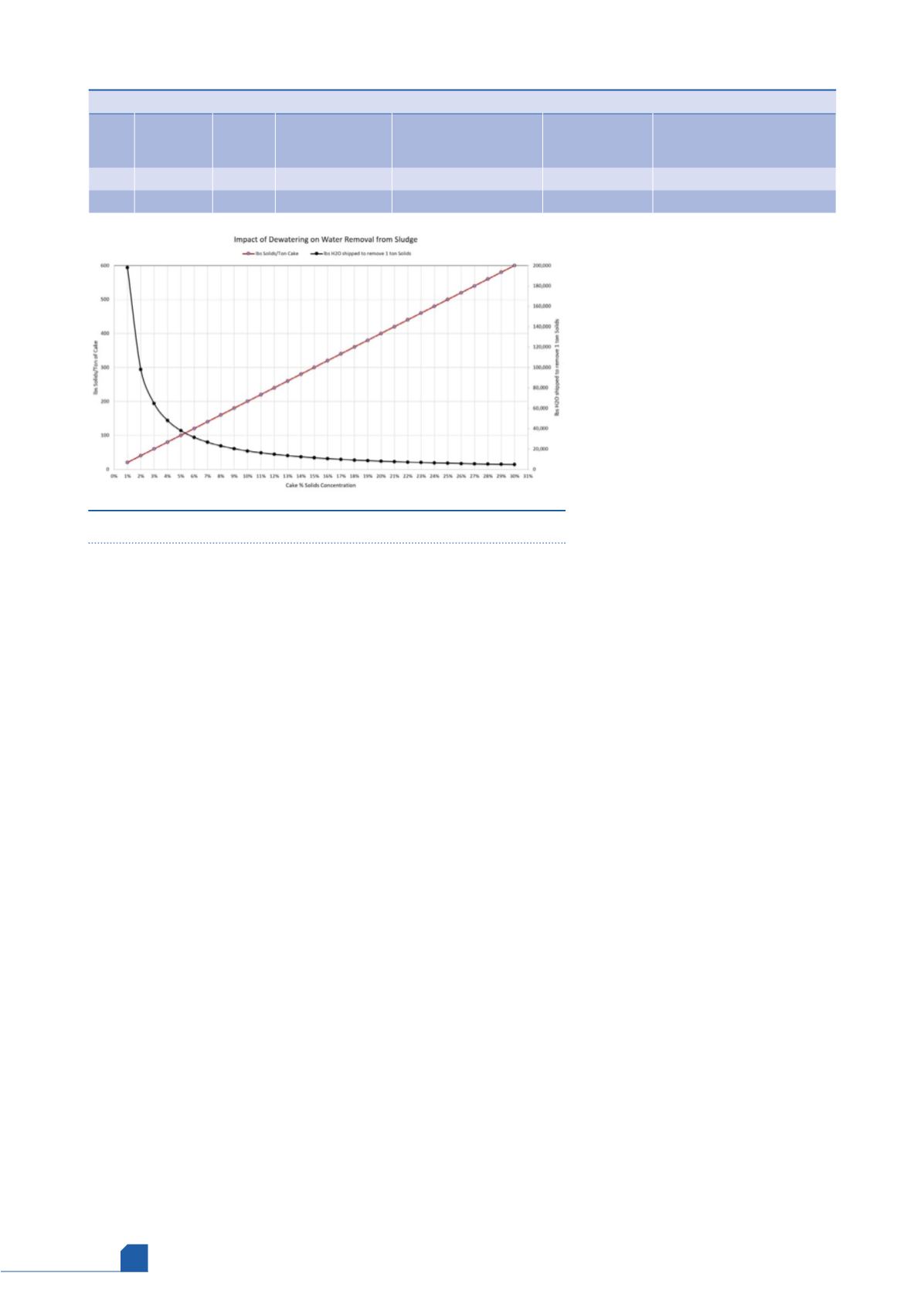
July
2020
HYDROCARBON
ENGINEERING
44
for additional free water drainage, but used an inadequate
sludge delivery and distribution header that resulted in the
solids piling up in the centre of the GDS belt. This poor
distribution of the treated sludge resulted in less than ideal free
water drain across the GDS and less than ideal dewatering in the
pressure section. In the second system, plows were not present
to shift the treated sludge and expose belt for enhanced free
water drain, resulting in significant amounts of free water
requiring removal in the pressure sections. Both of these
systems experienced poor dewatering and lower cake solids
percentages, meaning tons of water normally removed during
the BFP process was hauled to landfills at additional costs to the
site.
Optimisation of these GDSs resulted in almost 10%
improvement in dewatering efficiency in both systems.
Depending on the performance of the BFP prior to the
optimisation, this improvement in cake solids can result in a
reduction of between 10 – 16% in overall tons shipped off site
and a reduction of between 12 – 18% in water shipped off site. In
both of these sites, the BFP optimisation resulted in greater than
US$50 000/yr of savings in shipping costs with solutions that
cost fractions of that.
Importance of dewatering
Dewatering is defined as the removal of excess water from
wastewater treatment plant (WWTP) generated solids in order
to reduce their volume and to produce a product for further
processing or disposal. Dewatering differs from sludge
thickening not in the processes, procedures, and even
equipment used in some cases, but rather in the product
generated. Sludge thickening results in substantially higher solids
concentration, and in turn less water, but the final product still
flows and moves like a liquid. Dewatering sludge results in a
non-fluid cake that looks and behaves like a solid, namely that it
is not free flowing in nature.
1,2,3
The purpose of expending time, energy,
and money dewatering solids lies in the fact
that dewatering dramatically reduces the
weight and volume of wastewater produced
solids that require offsite disposal or
treatment. Water generally composes greater
than 99% of the mass accounted for in the
sludge wasted from a biological treatment
unit (WAS), and even the most effective and
efficient clarifiers only generate WAS with
moisture water contents of 98.5%.
2,3
Sludge
disposal can already occupy 40 – 50% of a
WWTP’s budget with dewatering occurring,
and this percentage significantly increases as
dewatering performance decreases.
4
To
illustrate the importance of effective
dewatering, Figure 1 depicts the impact of
increasing solids concentrations from 1% up
to 30%.
In addition to disposal costs comprising one of the largest
expenditures for WWTPs, the costs to dispose of the sludge
have increased across the industry. The average cost to dispose
of 1 t of solids increased to US$55.36 in the US, a 3.5% increase
from 2018 to 2019.
5
Belt filter press basics
While there are numerous pieces of equipment to dewater
sludge generated in a wastewater treatment plant such as
centrifuges, filter presses, and drying beds,the remainder of this
article will focus on BFPs.
BFPs consist of two tightly woven belts that wrap around
permeable rollers of differing radii while under tension in order
to press and squeeze the free and most of the interstitial water
from the solids floc formed by the proper chemical
treatment.
1,2,3
To further break BFPs down, each press consists of
three different sections that all play significant and unique rolls
in the effective dewatering of the generated sludge:
GDS.
Wedge compression section or moderate pressure section.
High pressure section.
The GDS serves to remove the majority of the free water by
allowing the treated sludge to distribute evenly over the belt
and by moving/turning the sludge by using plows which shift
the sludge side-to-side, freeing up uncovered belt and allowing
free water to bypass flowing through the sludge solids. The
wedge compression section applies slight pressure to the
material after the filter section, further removing the remaining
free water, but most importantly begins to fix the sludge in
place prior to the pressure section. This helps prevent the
sludge from flowing out the sides of the belt under higher
pressure. In the high pressure section, the now fixed sludge
cake experiences significant pressure, which causes any
Figure 1.
Impact of effective dewatering on water removal from sludge.
Table 1.
Percentage improvement realised by optimising the distribution of the belt filter press
Cake
solids
lb solids/t
cake
lb H
2
O/t
cake
t cake required to
remove 1 t solids
% reduction in t
disposed of with 1.3%
cake increase
lb H
2
O shipped
to remove 1 t
solids
% reduction in lb H
2
O
removed with 1.3% cake
increase
15.97% 319.4
1680.6 6.26
10 523
17.30% 346
1654
5.78
7.69
9561
9.15%








